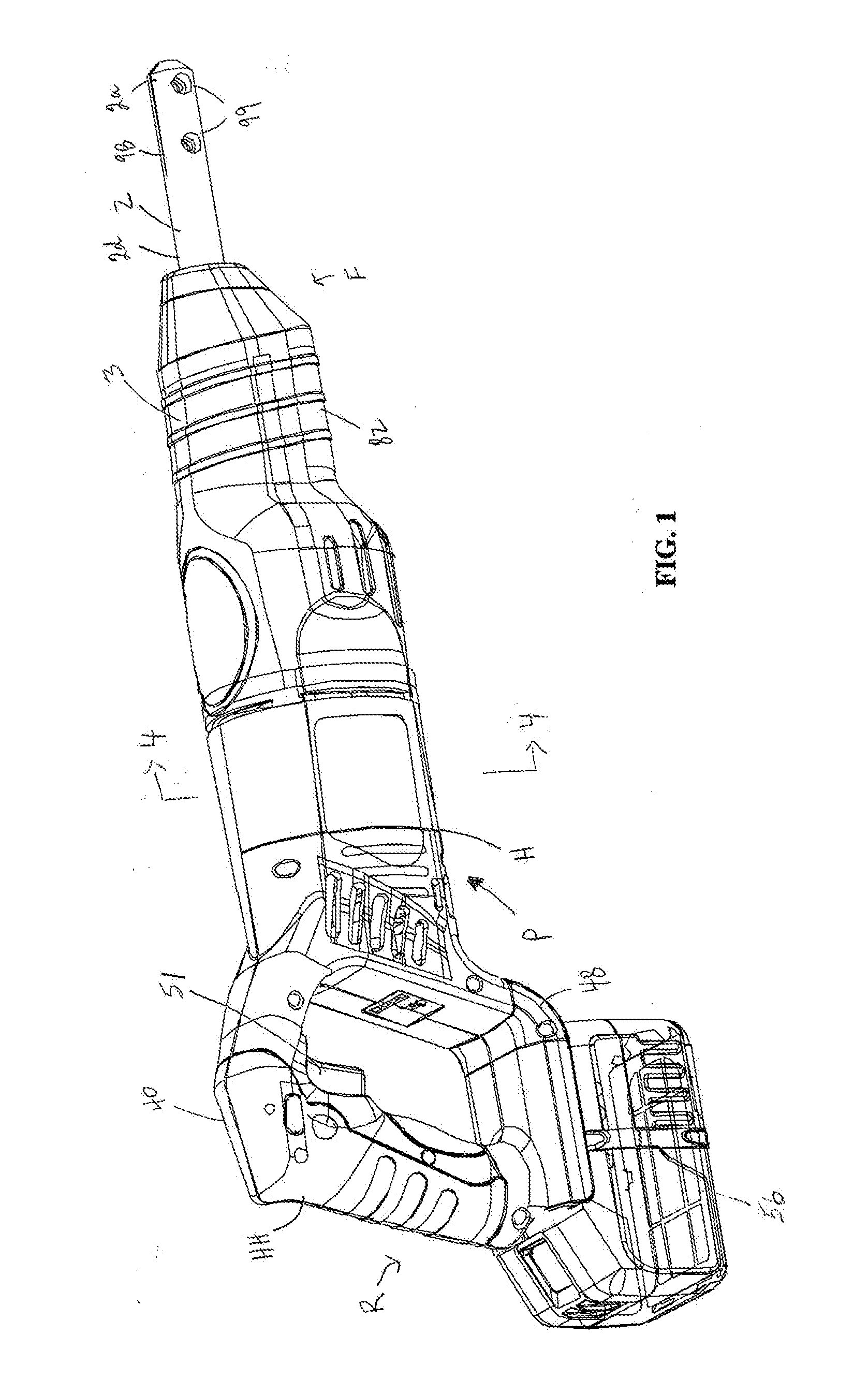Reciprocating power tool
a technology of power tools and drive mechanisms, applied in the direction of manufacturing tools, portable power-driven tools, drilling machines, etc., can solve the problems of reducing the notch effect and flaring of the connection, reducing the impact and wear of early power tools, and not easy to penetrate the urethane bed
- Summary
- Abstract
- Description
- Claims
- Application Information
AI Technical Summary
Benefits of technology
Problems solved by technology
Method used
Image
Examples
Embodiment Construction
[0063]Having reference to FIGS. 1-13, exemplary embodiments of the power tool P and its components are shown, with FIGS. 1 and 4 showing the tool in connected views, and FIGS. 2 and 3 showing the tool in exploded views. The tool P is shown to have a front or forward end F, and a rear or rearward end R. Components of the drive mechanism D are shown in greater detail in FIGS. 5-9. A removable nose cone 6 may be included, as shown in FIGS. 10A-F and 12A-E to accommodate a nose cone bushing 7. Alternate embodiments of an internal drive shaft are shown in FIGS. 5A, 5B; 6A, 6B; and 11A, 11B. An external shaft adapted to connect between the drive shaft of FIGS. 11A, 11B and to a windshield removal blade is shown in FIGS. 13A-13C.
[0064]The power tool P includes a housing H, including a left body 40 and a right body 48 connected by screws 38 and optionally providing left and right label plates 39 and 43. A handle HH is formed at the rear of the housing H, with a variable speed trigger switch...
PUM
| Property | Measurement | Unit |
|---|---|---|
| stroke length | aaaaa | aaaaa |
| stroke length | aaaaa | aaaaa |
| rated voltage | aaaaa | aaaaa |
Abstract
Description
Claims
Application Information
 Login to View More
Login to View More - R&D
- Intellectual Property
- Life Sciences
- Materials
- Tech Scout
- Unparalleled Data Quality
- Higher Quality Content
- 60% Fewer Hallucinations
Browse by: Latest US Patents, China's latest patents, Technical Efficacy Thesaurus, Application Domain, Technology Topic, Popular Technical Reports.
© 2025 PatSnap. All rights reserved.Legal|Privacy policy|Modern Slavery Act Transparency Statement|Sitemap|About US| Contact US: help@patsnap.com



